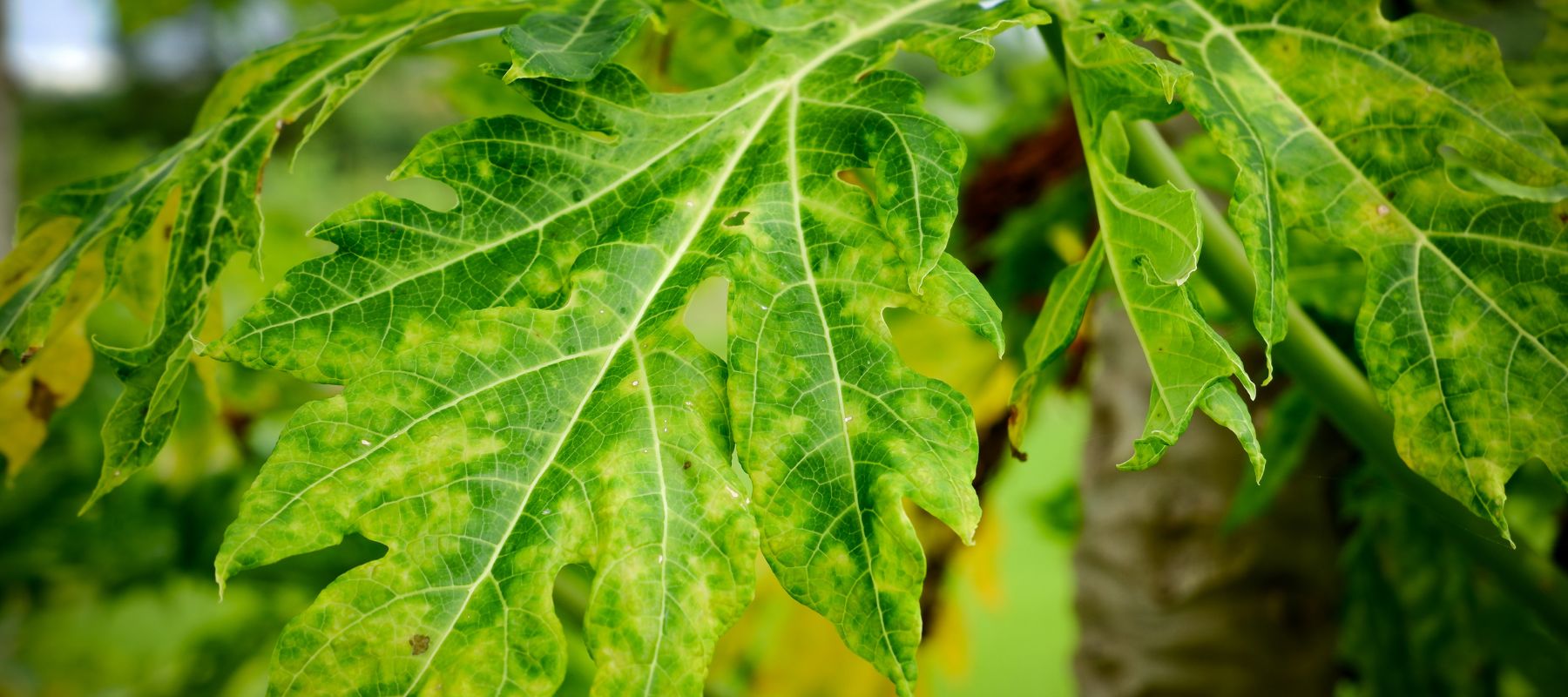Lesson 2 - Abiotic factors and plant health

As discussed in the previous lesson, abiotic plant stresses are not caused by other organisms, but rather by environmental stresses to which the crop does not have tolerance. Some common abiotic stresses and their symptoms and effects are listed in the following table.
| Abiotic Stresses, Symptoms and Effects | |
Stress | Symptom |
Freezing injury (exposure to temperatures below 0oC) | Blackened dead foliage, collapsed foliage, split stems, death. |
Cold injury (occurs at temperatures above 0oC – especially in tropical crops) | Yellowed foliage. |
Sunburn | Scorched spots on foliage, dead bark patches on trunks and branches, usually on north or west facing sides, sunken bleached areas on fruit, shrivelled fruit. |
Water stress (shortage) | Wilting, yellowing, loss of older foliage, stunting of growth, death. |
Sudden changes in water availability | Split fruit caused by rapid uptake of water after dry weather. |
Waterlogging | Wilting, scorching or cupping of leaf margins, loss of foliage, root rot, death. |
Salt damage | Scorching of leaf margins, leaf drop, death. |
Herbicide injury | Distortion of leaves and shoot tips, cupping of leaves, interveinal yellowing of leaves, stunting of growth, witch’s broom growth, death. |
Wind damage | Leaf scorching, leaf shredding and loss, pollination failures and poor fruit set. |
Nutrient deficiency | Poor growth, visual symptoms depending on the specific nutrient. |
Inappropriate soil pH | Poor growth, yellowing of new growth in alkaline soils. |
Hail damage | Shredded or punctured foliage, pitted stems, split or bruised fruit. |
A vital aspect of continued productivity when growing food is the maintenance of soil health. Monitoring soil health requires that a set of soil health indicators be used in order that any changes can be seen and remedied if necessary. A soil health indicator is a soil property that is important to the crop, and that can be measured, to follow changes or identify remedial treatment. The Cornell Soil Health Assessment Training Manual (Moebius-Clune et al.) suggests that a healthy soil has the following properties: good tilth, sufficient depth, an adequate but not excessive nutrient supply, small populations of harmful organisms, large populations of beneficial organisms, good drainage, low levels of harmful chemicals, resistance to degradation, and resilience under unfavorable conditions.
The table below is based on these and provides some guidelines that you might follow to implement a soil health approach in your own garden.
| Soil property | Test | Good result | Improving a poor result |
| Sufficient depth | Dig hole till poor conditions found (hard/impenetrable, waterlogged, mottled grey/orange/yellow). | 200-300 mm desirable. | Double digging with compost, use gypsum if soil tests indicate responsiveness, build raised beds to increase soil depth. |
| Good tilth | Crumble moist clod in hand, push fork into moist soil | Clod crumbles easily, fork easily pushed into soil. | Careful cultivation to loosen soil, increase organic matter, avoid walking on beds, mulch soil surface. |
| Good drainage | Dig a hole 150 mm deep (spade width), vertical sides, fill with water, time to empty recorded. | Empties in < 6 hours. | Increase organic matter, use raised beds, install drainage if warranted. |
| Nutrient supply | Soil testing is the only reliable indicator of nutrient status, nutrient deficiency symptoms may help but can be ambiguous. Different crops have different requirements.
| Soil pH 6-7, low salt, available P >50 ppm, available K > 120 ppm. Foliage dark green, no obvious deficiency symptoms. | Use a fertility program appropriate for the crop, ideally based on test results. Modify soil pH if necessary.
|
| Harmful chemicals | Heavy metal analysis (Vegesafe at Maquarie University), Garden Safe (Vic EPA), Salt content.
| Levels that do not exceed published guidelines. Lead is a major concern in home gardens, especially with old houses. Salt content less than published values for the crop in question. | Do not use contaminated soil for vegetables (fruit trees may be ok). Build raised beds isolated from soil. Be careful not to raise dust from contaminated soil. High salt content is difficult to modify. |
| Beneficial organisms | Presence of worms in moist soil. Note that soil microbiological testing is difficult | Worms found in most spadefuls. | Add organic matter, use organic mulch, keep soil moist and fertile. |
| Harmful organisms | Unexplained plant deaths. Soil testing for specific pathogens. | No unexplained plant deaths. | Maintain organic matter, rotate crops, use disease resistant cultivars. |
| Resistance to degradation/resilience | Friability, strong water-stable structure, no crusting on surface. | Soil condition does not deteriorate over time. | Increase organic matter, use gypsum if testing indicates responsiveness, use mulch. |
There is some evidence that production systems that don’t foster soil health (excessive cultivation, non-replacement of lost organic matter, destruction of soil structure, reliance on inorganic fertilizers) reduces plant health and can lead to reduced nutrient density in food crops.